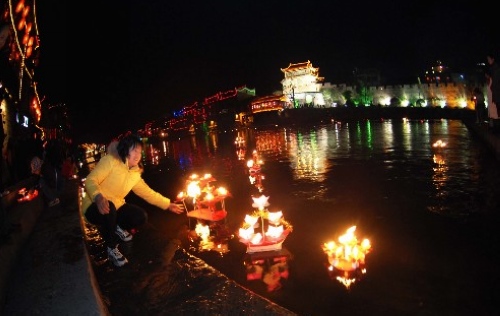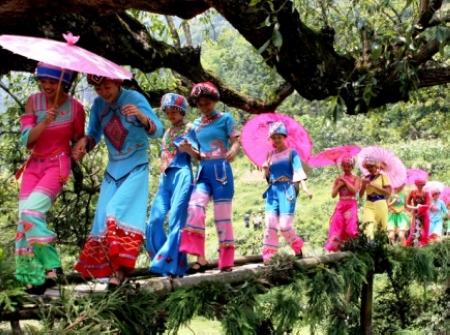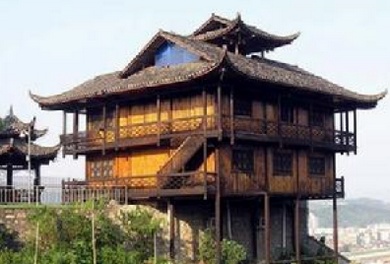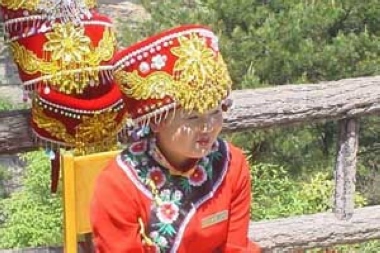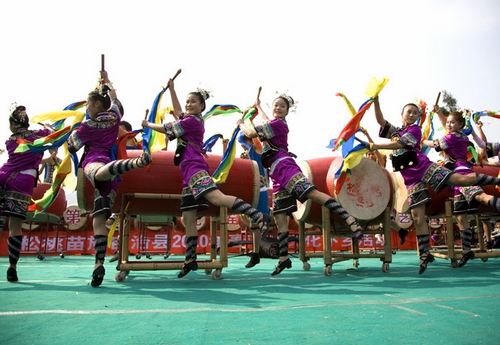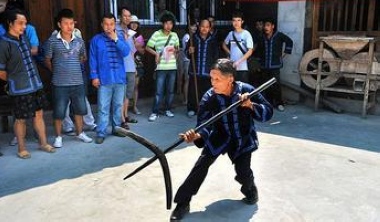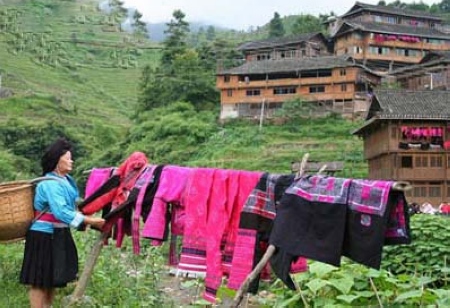Nowadays, as people travel to many places in the world, they make the observation that almost all dwellings are made of steel and cement, with little or no variety. As we express astonishment at the enormous progress in our world, but do you feel a bit of nostalgia and sadness? And we may ask the question: here are the social distinctions among our homes?
The Tujia peoples Diaojiaolou (stilted house) house has its own ethnic distinctiveness; for, it is constructed in such a way as to overhang the water and be supported by many wooden pillars. According to old tang book, the specific reason for building such a structure is to deliver the inhabitants from miasma, poisonous vegetation and venomous snakes. Aside from this, Tujia people are accustomed to constructing their houses over the water and in proximity to the mountains, with most residences established in the valleys, giving the appearance of crouching tigers. Clearly, the best way to construct a spacious and stable house, while economizing on material, is to lay the foundation on wooden pillars and build the structure upon it. Over several millennia, a simple shelter against wind and rain has evolved into a construction, which is practical, graceful and artistic, harmonizing with the surrounding natural environment.
SomeTujia people are wealthy and some are poor; some of their homes are rather large and others are modest in size. The layouts of typical Diaojiaolou houses (stilted house), however, are usually identical. They are situated on a flat foundation and appointed with 3to 5 rooms in the front portion, a main hall in the middle, and the principal living quarters along either side of the hall. Attached to the living quarters, then, is wing-room, which are usually divided into upper and lower stories. The upper portion serves as the ladys chamber, while the lower story houses the water buffalo and storage items.
Whether the dwelling is large or small, the Tujias follow three steps in building their Diaojiaolou residence: (stilted house), choosing the location, selecting the proper wood, and settling the ridgepole. First of all, the owner feels obliged to consult a geomancer to help him select a location by a compass and one, which is appropriate to geomantic principles. The position is chosen because it is beside a river and close to a mountain, a place that is appropriate to geomantic principles. The position is chosen because it is beside a river and close to a mountain, a place which enjoys sunshine but also shielded from the wind. After this, the builders select special wood for the house, and particularly for the ridgepole. The fir tree usually serves best because this variety is mostly straight and has less branches; whats more, it tends to grow large and vigorously. On one hand, the fir is practical, but it is also a symbolic choice; for, it speaks of the hope of prosperity for the family. The final step, then, is to set the ridgepole on the top of the roof. For the Tujia people, it is the symbol of ones success all his life. At this exciting and crowning moment, firecrackers is set off, song of setting the ridge pole is loudly shout out, and the owner stands on the ridge of his new home, and throws glutinous rice cakes to his fellow villagers who have come to offer their congratulations. In this way, there is a wonderful sharing of the happy moment of completion with friends and relatives.
The Diaojiaolou residence is not the only one used by the Tujia minority. Those living in the open areas often build tile-roofed houses with many rooms. Rich families construct large compounds composed of several dwellings. Human beings walked out of the forest eons ago, so now they are longing to return there and enjoy something they used to possess. For those who have lived for a long while in skyscrapers, how pleasant it is to abide in a Diaojiaolou house, all the while breathing the fragrant wood scent as one falls into sleep. One author wrote: to sleep in a Diaojiaolou (stilted house), would bring you ten years worth of joy!
